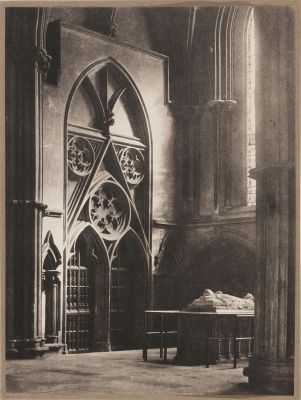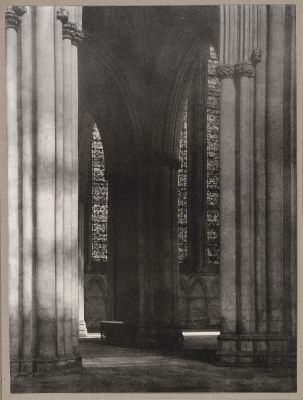
Title
Icy NightArtist
Stieglitz, Alfred (American, 1864-1946)Key FigurePublication
Camera Work IVDate
1903Process
PhotogravureAtelier
Photochrome Engraving Company, New YorkImage Size
16 x 13 cm
Photography in low-light conditions first became possible in the late 1880s with the introduction of the gelatin dry-plate process, which reduced exposure times significantly. Alfred Stieglitz and Edward Steichen were among the first artists to take up the challenge of capturing images after dark. Stieglitz turned his lens on the city in such works as Reflections: Night, New York (1897) and An Icy Night (1898), while Steichen rendered the magic of the woods at dusk in Woods Twilight (1899). Alvin Langdon Coburn, a contemporary of Stieglitz and Steichen, was mesmerized by the glow of Manhattan’s electrified streetlamps, which he compared to stars lighting up the avenue, as in his photograph Broadway at Night (ca. 1910). By the early 20th century, night photography came into its own as an artistic genre as the technical innovations of smaller handheld cameras, faster photographic film, and commercial flashbulbs freed artists to explore further the nocturnal universe of shimmering light and velvety darkness.
Reproduced / Exhibited
Greenough, Sarah, and Alfred Stieglitz. Alfred Stieglitz: The Key Set : the Alfred Stieglitz Collection of Photographs. Washington, D.C: National Gallery of Art, 2002. Pl 258
Kruse, Margret. Kunstphotographie Um 1900: D. Sammlung Ernst Juhl; Hamburg: Museum für Kunst u. Gewerbe, 1989 pl. 864
Stieglitz, Alfred, Richard Whelan, and Sarah Greenough. Stieglitz on Photography: His Selected Essays and Notes. New York, NY: Aperture Foundation, 2000. p. 85
Rooseboom, Hans. Électricité: Ten Advertising Photographs by Man Ray. Rijksmuseum: Baker & McKenzie, 2020 no 31
Thornton, Gene. Masters of the Camera: Stieglitz, Steichen & Their Successors. New York: Ridge Press, 1976 p. 49







